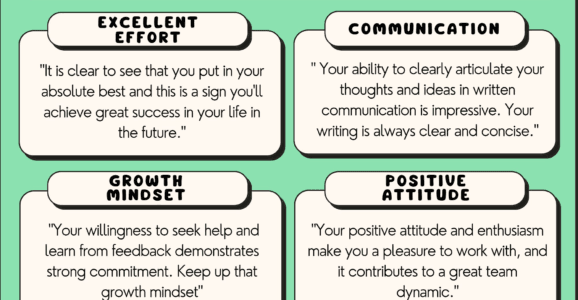Motivation is the driving force behind every successful athlete. For teenage athletes, in particular, improving motivation can be the key that unlocks their potential both on and off the field. As a coach, understanding how to effectively motivate your young athletes is essential not only for their athletic development but also for fostering life skills such as discipline, resilience, and a positive work ethic. This article provides comprehensive guidelines to help coaches enhance motivation among teenage athletes, ensuring they remain engaged, committed, and passionate about their sport.
Understanding the Teenage Athlete
Before diving into specific strategies, it’s crucial to understand the unique characteristics of teenage athletes. Adolescence is a period of significant physical, emotional, and psychological development. Hormonal changes, social dynamics, and the quest for identity can all impact a teenager’s motivation levels.
Teenagers are developing their self-concept and are highly sensitive to feedback, both positive and negative. They are also beginning to seek autonomy and may resist authoritative figures if they feel their independence is being threatened. Understanding these developmental factors can help coaches tailor their approach to better connect with and motivate their athletes.
Guidelines for Improving Motivation
1. Set Clear, Achievable Goals
Setting goals is more than just defining what athletes aim to achieve; it’s about crafting a roadmap for success. When goals are clear and achievable, they serve as a powerful motivational tool. Start by helping athletes understand the importance of setting SMART goals—Specific, Measurable, Attainable, Relevant, and Time-bound.
Collaborative Goal-Setting
Involve your athletes in the goal-setting process. Ask them about their aspirations and what they hope to accomplish. This involvement ensures that the goals are meaningful to them personally, which increases their commitment.
Example: Instead of setting a vague goal like “improve your sprint time,” work with the athlete to set a specific target, such as “reduce your 100-meter sprint time by 0.5 seconds in the next three months.”
Regular Review and Adjustment
Regularly review and adjust goals as needed. Celebrate milestones along the way to keep motivation high. If an athlete achieves a goal ahead of schedule, set new targets to maintain momentum.
2. Foster Intrinsic Motivation
While external rewards and recognition can be motivating, fostering intrinsic motivation—motivation that comes from within—is more sustainable in the long term. Encourage athletes to find personal satisfaction in their improvement, mastery of skills, and the joy of participating in the sport.
Creating an Autonomy-Supportive Environment
- Autonomy: Give athletes some control over their training. Allow them to make choices about certain drills or exercises.
- Competence: Help them develop skills and recognize their improvements. Provide challenges that are within their capabilities to overcome.
- Relatedness: Build strong relationships within the team, so athletes feel connected and supported.
Emphasizing Internal Rewards
Help them reflect on what they enjoy about the sport and how it contributes to their personal growth. By emphasizing internal rewards, athletes are more likely to remain motivated even when external incentives are absent.
3. Provide Positive Feedback and Encouragement
Positive reinforcement can significantly boost an athlete’s confidence and motivation. Acknowledge effort, improvement, and achievements, no matter how small. Constructive feedback should be delivered in a way that highlights areas for improvement while also affirming the athlete’s abilities.
Specificity in Praise
Be specific in your praise and avoid general statements. This helps athletes understand exactly what they did well and encourages them to continue those behaviors.
Example: Instead of saying “Good job,” say “Your footwork during that drill was excellent. Keep up the great work on your agility.”
Constructive Criticism
When addressing areas for improvement, frame it constructively. For example, “You’ve made great progress on your endurance; let’s focus on your sprinting technique to enhance your overall performance.”
4. Build a Supportive Team Environment
A positive team culture fosters motivation by creating a sense of belonging and mutual support. Encourage teamwork, camaraderie, and respect among athletes. Address any negative behaviors promptly to maintain a healthy team dynamic.
Team-Building Activities
Organize team-building activities that promote trust and cooperation. When athletes feel connected to their teammates, they are more likely to be motivated to contribute to the team’s success.
Mentorship Programs
Implement mentorship within the team, pairing more experienced athletes with newer ones. This not only helps skill development but also fosters a sense of responsibility and belonging.
5. Encourage Self-Reflection and Ownership
Empower athletes by involving them in decision-making processes related to their training and development. Encourage them to reflect on their performance, identify areas for improvement, and set personal goals.
Promoting Self-Assessment
After competitions or training sessions, hold debriefs where athletes can reflect on their performance. Ask open-ended questions like, “What do you think went well today?” or “What could we improve next time?”
Providing Tools for Reflection
Provide tools such as journals or performance logs where athletes can track their progress, set new goals, and reflect on their experiences. This approach fosters a sense of ownership over their athletic journey and promotes self-motivation.
6. Emphasize Personal Improvement Over Comparison
Teenagers often compare themselves to their peers, which can lead to decreased motivation if they feel they are not measuring up. Encourage athletes to focus on their personal progress rather than comparing themselves to others.
Highlighting Individual Progress
Highlight individual improvements and personal bests. By shifting the focus to self-improvement, athletes are more likely to stay motivated as they recognize their own growth.
Sharing Inspirational Stories
Share stories of athletes who have overcome personal challenges or who have taken unconventional paths to success. Reinforce the idea that each athlete’s journey is unique.
7. Keep Training Varied and Engaging
Monotonous routines can lead to boredom and decreased motivation. Incorporate variety into training sessions to keep athletes engaged. Introduce new drills, games, or challenges that align with the training objectives.
Incorporating Cross-Training
Introduce cross-training activities that complement their primary sport. For instance, yoga can improve flexibility and focus, while swimming can enhance cardiovascular endurance.
Using Technology and Gamification
Use technology and gamification to make training more engaging. Apps that track performance or provide virtual challenges can add an element of fun.
8. Address Individual Needs
Each athlete is unique, with different strengths, weaknesses, and motivational triggers. Take the time to understand each athlete’s individual needs and tailor your coaching approach accordingly.
One-on-One Meetings
Conduct one-on-one meetings to understand each athlete’s motivations, challenges, and personal goals. This personalized attention shows that you care about them as individuals.
Being Attentive to Well-Being
Be attentive to signs of burnout or overtraining. Adjust training loads accordingly and encourage rest and recovery when needed.
9. Teach Mental Skills and Resilience
Mental toughness is a critical component of athletic success. Teach your athletes techniques for goal-setting, visualization, self-talk, and coping with pressure.
Incorporating Mental Training
Incorporate mental training into your regular sessions. Teach techniques such as deep breathing, mindfulness, and positive visualization.
Promoting a Growth Mindset
Encourage a growth mindset, where challenges are seen as opportunities to learn rather than insurmountable obstacles. Developing these mental skills can enhance motivation by equipping athletes to handle setbacks and persist in the face of difficulties.
10. Involve Parents and Guardians Appropriately
Parents and guardians play a significant role in a teenager’s life. Engage them in the process by communicating openly about goals, expectations, and how they can support their child’s motivation.
Positive Parental Involvement
Hold informational sessions for parents to explain your coaching philosophy, goals for the team, and ways they can support their children.
Establishing Boundaries
However, it’s important to ensure that parental involvement is positive and does not add undue pressure. Provide guidance on how they can encourage their child without creating additional stress.
11. Model Motivational Behavior
As a coach, your attitude and behavior set the tone for your team. Demonstrate passion, enthusiasm, and a positive outlook. Your commitment can be contagious, inspiring your athletes to adopt a similar attitude.
Demonstrating a Growth Mindset
Show how you learn from mistakes and continuously seek to improve your coaching skills. Athletes are likely to emulate the behaviors they observe in their role models.
Maintaining Professionalism
Maintain professionalism and integrity in all interactions. Being a role model in both actions and words can significantly influence your athletes’ motivation levels.
12. Celebrate Achievements
Recognize and celebrate both individual and team accomplishments. This can be through awards, acknowledgments during team meetings, or highlighting successes in newsletters or social media.
Creating Recognition Programs
Create a recognition program within the team. This could include “Athlete of the Week” awards, highlighting not just performance but also sportsmanship, improvement, or teamwork.
Hosting Celebratory Events
Host end-of-season events to celebrate the team’s accomplishments, including informal gatherings where athletes can relax and enjoy each other’s company.
13. Provide Challenges
Introducing appropriate challenges can stimulate motivation by pushing athletes out of their comfort zones. Set tasks that are achievable but require effort and perseverance.
Progressive Drills
Design drills that progressively increase in difficulty. This keeps athletes engaged and provides a sense of achievement as they master each level.
Friendly Competitions
Introduce friendly competitions within the team. This can stimulate motivation while also promoting camaraderie.
14. Maintain Open Communication
Foster an environment where athletes feel comfortable expressing their thoughts, concerns, and ideas. Regularly check in with your athletes to gauge their motivation levels and address any issues promptly.
Regular Check-Ins
Establish regular check-ins with your athletes. This can be formal meetings or casual conversations before or after practice.
Listen actively to their concerns and suggestions. Show empathy and be willing to make adjustments based on their feedback.
15. Educate About the Bigger Picture
Help athletes understand how their current efforts contribute to their long-term goals and overall development. Connecting day-to-day activities with future aspirations can enhance motivation.
Discussing Future Opportunities
Organize sessions where athletes can learn about potential career paths in sports, including opportunities in coaching, sports science, or administration.
Highlighting Transferable Skills
Discuss how skills learned in sports, such as teamwork, leadership, and time management, are transferable to other areas of life, including academics and future careers.
Conclusion
Motivating teenage athletes is a dynamic and multifaceted process that requires patience, understanding, and adaptability. By implementing these guidelines, coaches can create an environment that not only enhances athletic performance but also supports the personal growth of their athletes.
Remember that motivation is not static; it fluctuates and requires ongoing attention. Stay attuned to your athletes’ needs, and be flexible in your strategies. Celebrate their successes, support them through setbacks, and continue to inspire them with your dedication and passion.
Your role as a coach extends beyond teaching skills and strategies. You have the opportunity to shape young individuals who are confident, resilient, and motivated to achieve their full potential. Embrace this responsibility with enthusiasm, and the rewards will be immeasurable—not just in victories and records, but in the lasting impact you have on your athletes’ lives.
Encourage your athletes, celebrate their achievements, and be the mentor who ignites their passion and motivation. The impact of your efforts will resonate long after the final whistle blows.
By following these guidelines, coaches can unlock the full potential of their teenage athletes, fostering not only better performance on the field but also contributing to the development of motivated, responsible, and resilient young adults.


